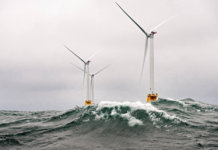A new report issued by the Western Grid Group (WGG), with support from the Western Clean Energy Advocates (WCEA), finds that with intentional policy-making and planning today, the West can successfully transition to a clean energy economy that will deliver job, environmental and public health benefits for decades to come.
Former Colorado Gov. Bill Ritter joined the advocacy groups in calling for Western state leadership and regional collaboration to achieve the report's Clean Energy Vision.
‘In my time as governor, Colorado saw tremendous benefit from our commitment to clean energy,’ he says. ‘I call on Western state policymakers to similarly prioritize clean energy and to reach across state lines to help build a stronger energy future for the West.’
Over $200 billion will be invested in the Western electricity system over the next two decades as aging infrastructure is replaced and new infrastructure is built to meet growing energy needs, according to the report, which is intended to provide a detailed analysis of the business-as-usual (BAU) and clean energy paths.
‘Retooling the infrastructure and changing the way we use energy will require a serious commitment, but the transition is achievable through deliberate policy, planning and investment decisions,’ says report author Carl Linvill, director of integrated energy analysis and planning at the Aspen Environmental Group.
The report details the energy resource mixes and grid operations of contrasting cases in 2030 and 2050. A BAU case assumes continued dependence on legacy resources, infrastructure and grid operation in order to meet Western electricity needs.
A clean energy vision (CEV) case assume that efficiency, demand response and distributed (or small-scale) renewable generation are pursued aggressively. In addition, the case assumes that a transition from coal to large-scale renewable energy is made.
According to the report, the CEV can deliver a better return on the West's energy investment. Highlights include the following:
– The CEV represents significantly more direct investment in high job-creating infrastructure development and operation than does BAU, which requires high expenditures on fuel supply;
– The CEV delivers the energy security and price benefits of reduced dependence on volatile fuel supplies, centralized power generation and imported fossil fuels;
– The CEV is much less polluting and emits significantly less carbon dioxide. The CEV also reduces electricity-related water consumption by more than half by 2050, saving 289-343 billion of gallons of this severely limited resource; and
– The CEV is achievable with manageable impact on Western lands. The highest large-scale renewable build-out case under the CEV represents approximately half of 1% of the land in the West.
In September, the WGG and WCEA plan to release the second phase of this report, which will identify the many policies that are already in use and can be expanded, as well as new ones available to states that can and will guide a transition to a clean energy future.



